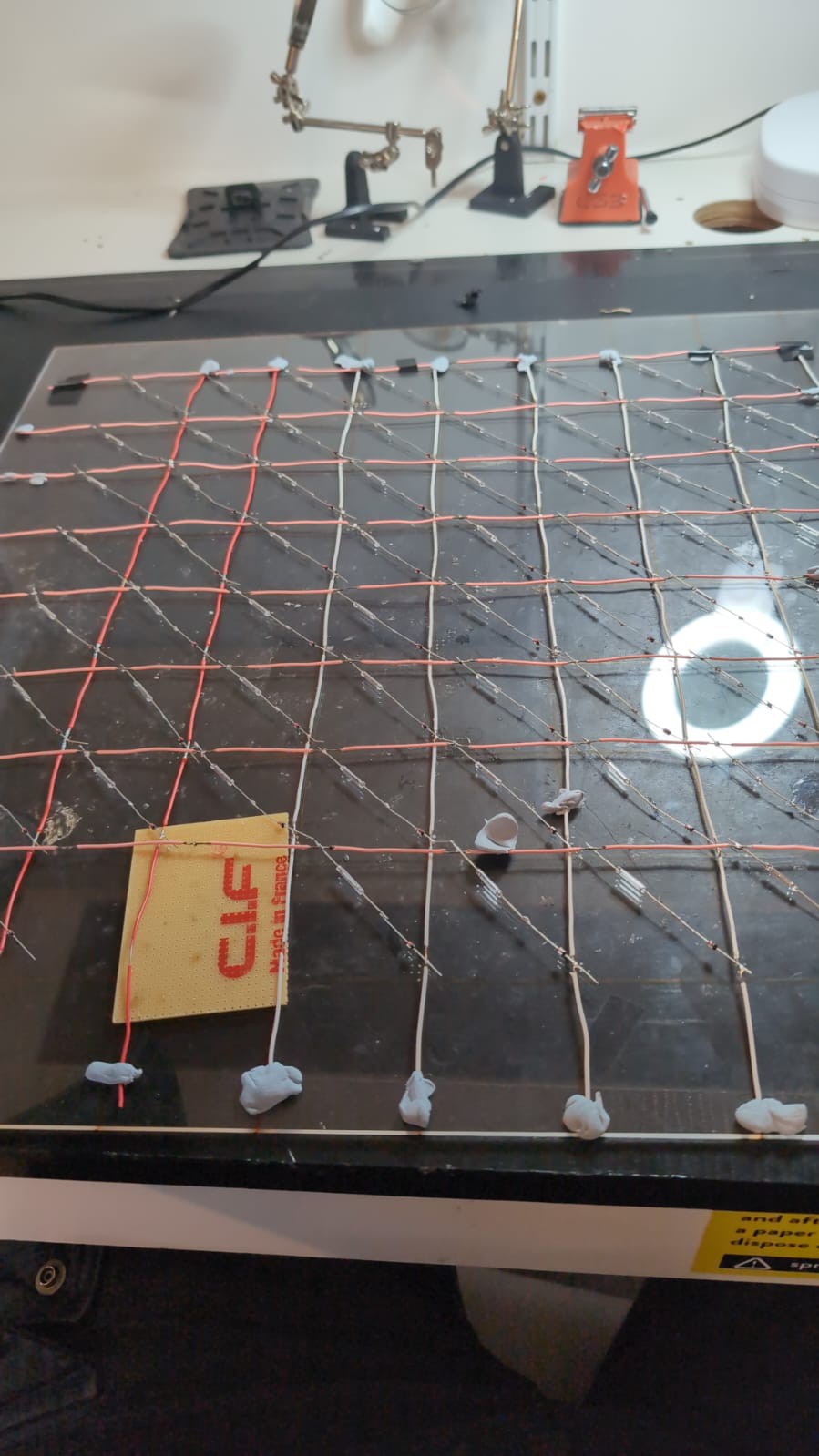Now that we have a method for moving our chess pieces—using an electromagnet to attract a magnet embedded in the bottom of each piece—we need a way to detect where the pieces are.
This can be done using reed switches, a type of electronic component that detects when a magnet is nearby. However, since a chessboard has 64 squares, and each reed switch requires both a positive and a negative wire, a direct approach would mean 128 wires just to read the board state.
After some brainstorming, we realized that we could share power lines by splitting them into 8 rows (positive) and 8 columns (negative). This allows us to read the board by pulsing one row high and then checking the columns to see which squares are occupied.
To prevent power from leaking into other columns, we added Zener diodes to one end of each reed switch, ensuring current flows in only one direction.
With this setup, we can now read the entire board using just 16 wires instead of 128.
This can be quite a tedious soldering session but it gave us plenty of time to become comfortable with soldering. Hopefully, we can turn this into a PCB as the reed-switch matrix can short quite easily.

 Mark Austin
Mark Austin
Discussions
Become a Hackaday.io Member
Create an account to leave a comment. Already have an account? Log In.